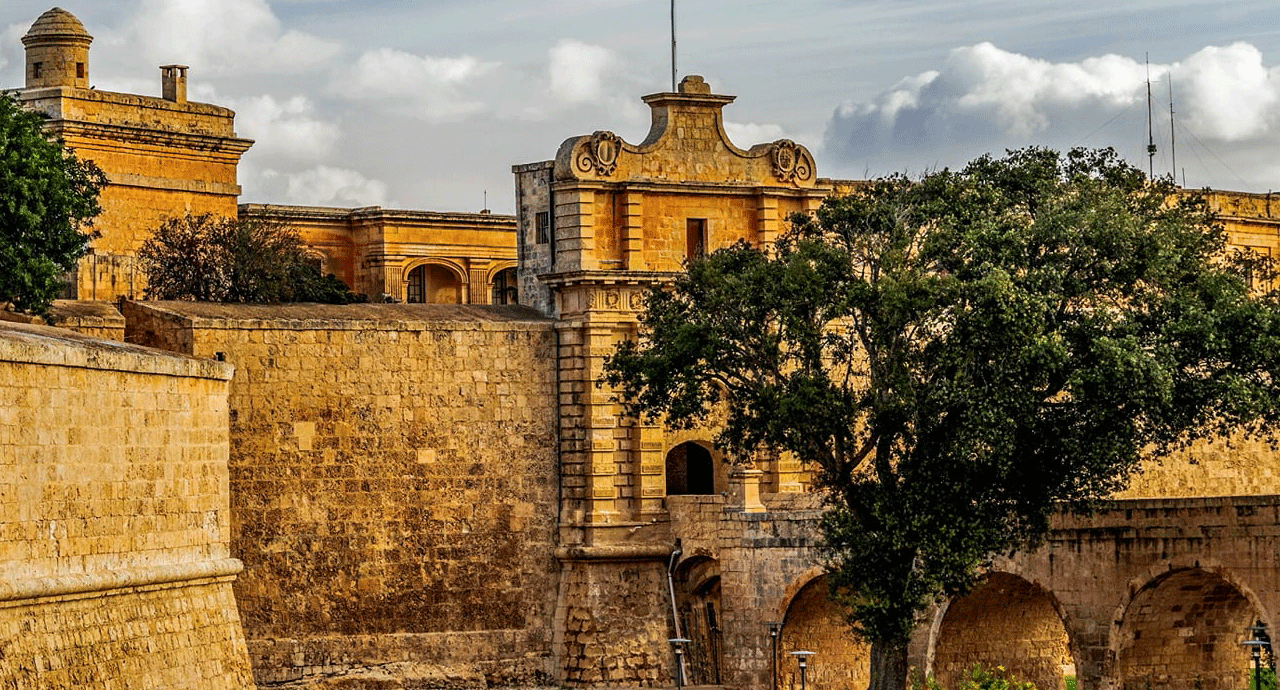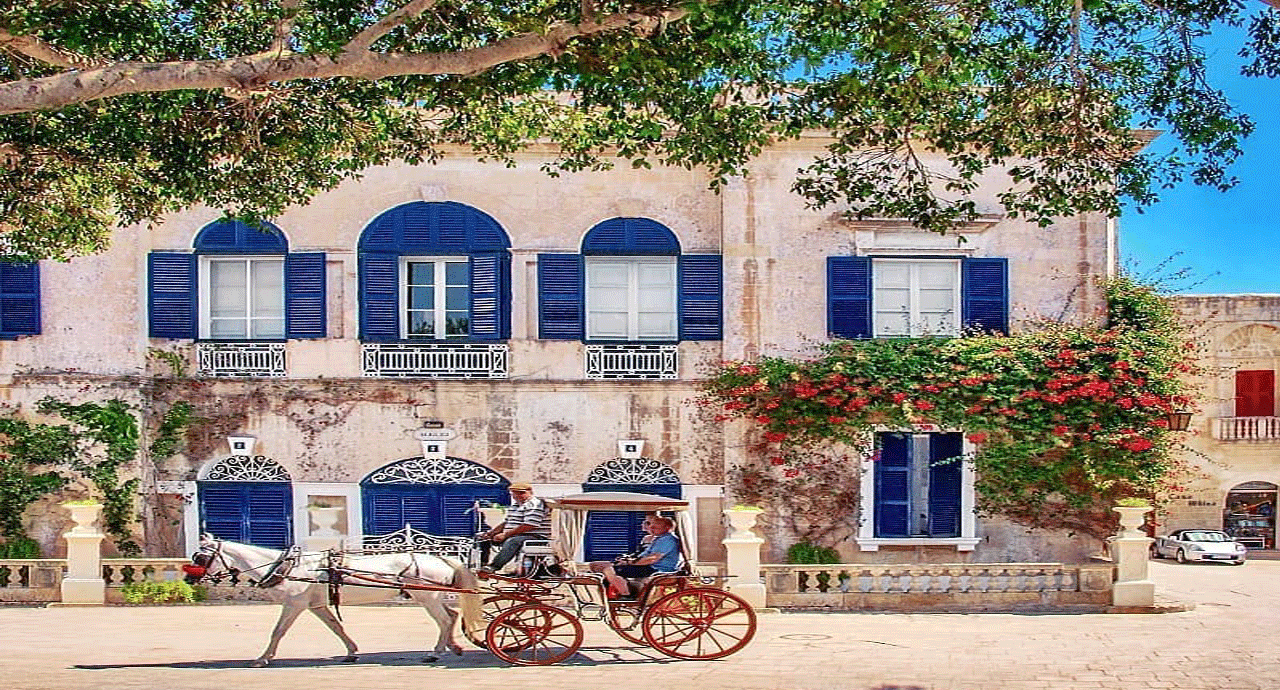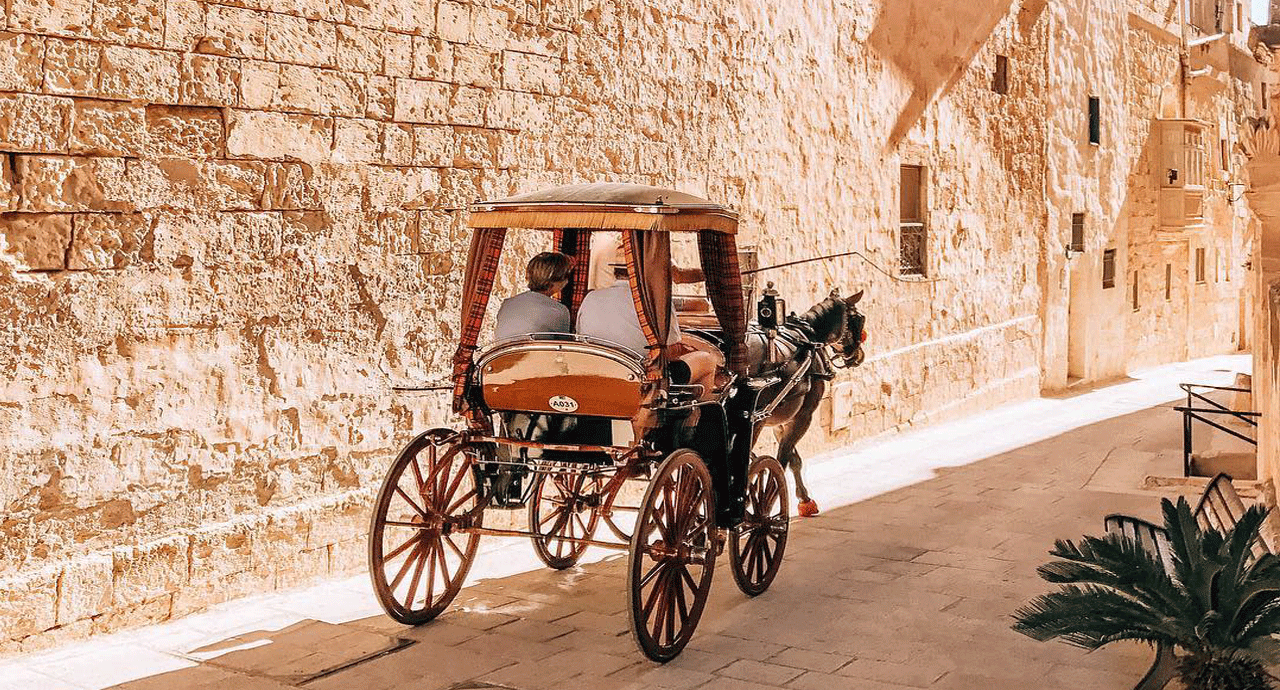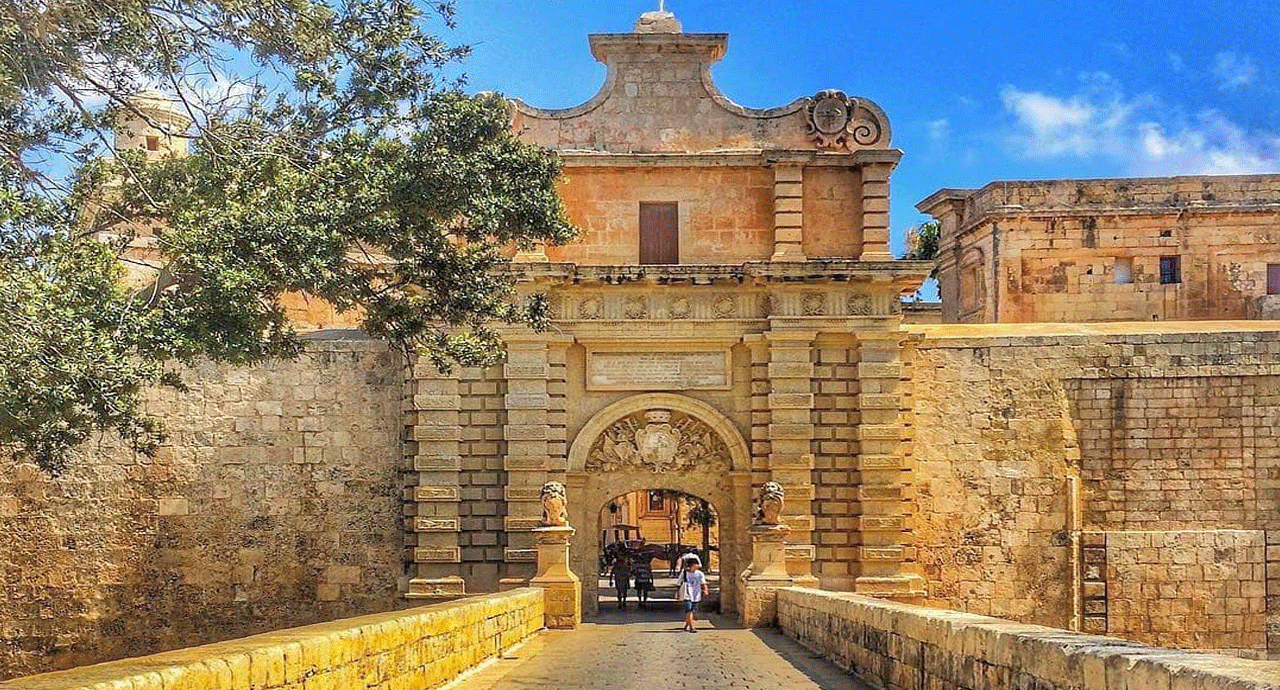Our Latest Blogs
from around the Maltese Islands
Mdina - The Silent City
The small and fully fortified Mdina officially served as the capital of Malta until the 16th century. Currently, the city is inhabited by only a few hundred people, but every day crowds of tourists come here to wander the narrow medieval streets and see the facades of baroque mansions. Mdina has had many names and nicknames throughout its history. Initially, it was called the Noble City (Città Notabile), because it was here that members of the Maltese nobility had their homes. Some of the city mansions still belong to the descendants of the former aristocracy. Soon after, after the Great Siege of 1565 and the erection of Valletta, Mdina was renamed the Old Town (Città Vecchia). This nickname was to distinguish the former capital from the new administrative center, built by the Grand Master of the Order, Jean de la Valette. Currently, Mdina is most often called the Silent City (alternatively the City of Silent). This name does not refer to any dark or mysterious event, but simply to the fact that there is peace and quiet behind the walls of the historic capital. Walking through the narrow streets, we will surely come across one of the signs that reminds us of the inhabitants and encourages visitors to keep quiet. This somewhat sleepy atmosphere is fostered by a ban on driving around the town (except for residents and people working on the spot). If we visit Mdina in the morning or closer to the evening, when the crowds of tourists have already left, we will only hear the clatter of our footsteps while walking along the narrow streets.
Entrance to Mdina - City Gate and Greek Gate
Mdina is a fully fortified city. We can enter one of the two gates. We can choose the main, baroque City Gate (Malt. Il-Bieb tal-Imdina) and the less impressive Greek Gate (Malt. Bieb il-Griegi). The first of them was built only at the beginning of the 18th century. Its construction was initiated by the Grand Master of the Order, Antonio Maoel de Vilhena. It replaced the medieval entrance system, which consisted of three independent gates. A stone bridge leads to the City Gate. The structure consists of a decorative portal and guard rooms above it. The coats of arms of the city and de Vilheny are visible above the entrance. After crossing the gate, we can look away and look at the three characters located directly above the portal. They represent the saints associated with the city - in the middle stands St. Paul; surrounded by St. Publius (on the left, we mentioned more about him later in the article) and St. Agata (right). The second gate, the Gate of the Greeks, is a bit off the beaten track. Although its external portal is the result of a baroque reconstruction in 1724, it has retained its medieval character. The gate takes its name from the Greek community that lived directly behind it. This gate was used as service gate.
Howard Gardens: one of the unique parks in Malta
Mdina boasts one of the largest gardens in Malta, where we can rest on one of the benches or simply take a walk. This park was laid out in an unusual place - in a dry moat between Mdina and Rabat, thanks to which we will be able to see the walls and bastions better during the walk. The gardens were named after Joseph Howard, Malta's first prime minister, who died in 1925.
Vilhena Palace (Natural History Museum) and Torre dello Standardo
After crossing the City Gate, you will immediately come across two important monuments. On the left stands the baroque tower Torre dello Standardo, which replaced an earlier medieval structure. On the right there is one of the city's most magnificent palaces - the Vilhen Palace (Malt. Il-Palazz De Vilhena), built in the 18th century, designed by Charles François de Mondion, born in Paris. The building is characterized by a monumental courtyard and a facade with neoclassical elements. We enter the courtyard through a decorative arch. In the nineteenth and twentieth centuries, the palace served as a hospital and sanatorium, and since 1973 it houses the Maltese Museum of Natural History. The facility itself is worth recommending to those readers who are interested in the flora, fauna and geology of the Maltese archipelago.
St. Paul’s Cathedral - the baroque jewel of Mdina
Mdina's pride is the baroque cathedral of St. Paul (Malt. Il-Katidral Metropolitan ta 'San Pawl) from the turn of the 17th and 18th centuries. Its design was the responsibility of the Maltese architect Lorenzo Gafa, who went down in history as the creator of about twenty baroque temples in Malta and Gozo. The interior of the cathedral is distinguished by the richness of baroque decorations. One may even be tempted to say that it is a more modest version of Saint John's Co-Cathedral in Valletta. The floor is filled with colorful marble memorials and tombs, while the side chapels and the nave's vault are decorated with various frescoes and paintings, some of which were created in the studio of Mattia Pretti.
Cathedral square and the neo-Gothic Casa Gourgion
The cathedral square is the central and most important point in the city. Its decoration is the aforementioned cathedral and the former seminary (now the Cathedral Museum), but it is worth paying attention to one more building - Casa Gourgion, built in the neo-Gothic style. Its designer was the famous Maltese architect Andrea Vassallo, who worked at the turn of the 19th and 20th centuries and became famous for the design of the Ta 'Pinu basilica on Gozo. The Casa Gourgion building is located on the north side of the Cathedral Square and is easy to recognize as it is completely different from the neighboring buildings.
Palace of Falson (Palazzo Falson)
Near the northern end of Mdina you will find the medieval Palace of Falson (Palazzo Falson), which is one of the oldest buildings in the city. The palace owes its current name to the Falsone family, the first documented owners of the residence. The palace was built in the thirteenth century as a one-story residence, and it took its present, two-story shape during the reconstruction two centuries later. The façade of the building also dates from the 15th century. The importance of the palace is evidenced by the fact that it was chosen as his seat by Philippe Villiers de l'Isle Adam, the first Grand Master of the Order of Malta in his first, short visit in Mdina.
Bastion Square - viewpoint over the island
Going to the end of Villegaignon Street, we will come across one of the bastions. On this part of the fortification wall still can be seen a small bastion from the Byzantine time . This was a guard view point. Nowadays, the bastion serves as a great vantage point over the surrounding area from the Free Port in Birzebuggia to the St. Paul’s Bay including almost 70% of the territory of the island of Malta.To the north of Mdina there are arable fields, and by straining our eyes, we will also be able to see the dome of the famous Rotunda in Most or the Mediterranean Sea.
Casa Inguanez
Casa Inguanez was built in the mid-14th century as the residence of the noble Inguanez family. This family ruled the island during the time Malta was part of Aragon and later Spain. Their governor lineage was so important to the city's history that their coat of arms is engraved inside the main gate. Two of Spain's most famous kings lived in this house. in 1432, one of the most decorated kings in the history of Aragon, Alfonso V of Aragon, lived in this house for several months. In 1927, Alfonso XIII did the same, but for a few nights. Interestingly, the king of Spain still has the right to live in this residence, but no member of the royal family has visited it since the beginning of the 20th century.
Carmelite Church (Church of the Annunciation)
This church was completed in 1675 and was one of the first baroque buildings in Malta. The church is the work of the French architect Mederico Blondel. During the 1693 earthquake that destroyed many important buildings, most notably the medieval St. Paul, the cathedral chapter moved to the Carmelite Church until 1702, when the new cathedral was rebuilt. The church is richly decorated by famous artists such as Mattia Preti, Stefano Erardi, Michele Bellanti, and the famous local artist Giuseppe Calì.
St. Roque Church
It is a small church inaugurated in the 18th century on the site of the present church, which existed in 1393. St. Rogue was called against cholera, epidemics, plague, skin diseases. Europe suffered from disease for many years and the only hope for many people was faith in this saint. This is an important reason why it is worth seeing the churches or chapels dedicated to St. Roque in all old European cities, especially in the quiet and mysterious Mdina.




